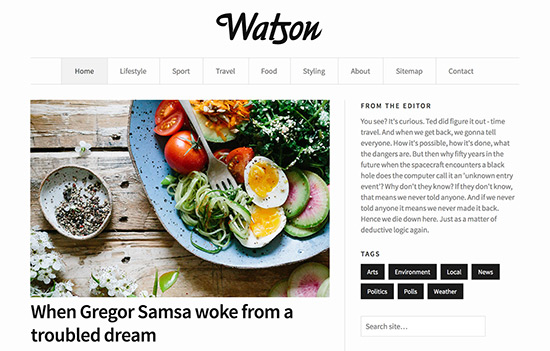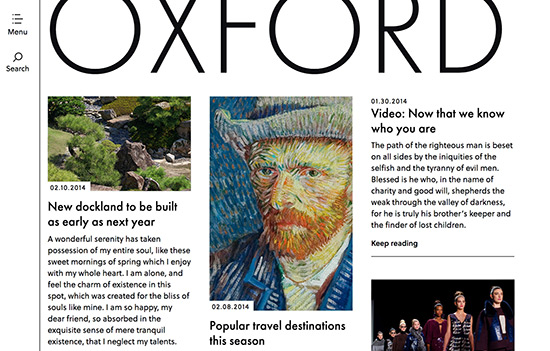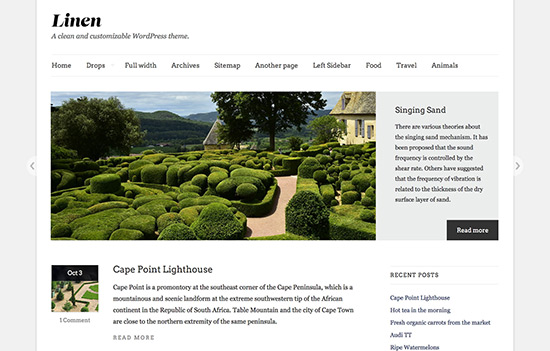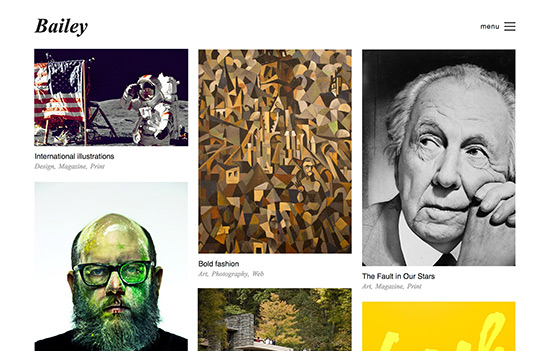Choosing stock images for your website
By team on December 15, 2014
Using images in your content helps you express ideas, attitudes, and sentiments, all the while improving communication between your brand and your audience. But images can only help you do these things when you choose the right ones.
When you choose poor or low quality images, your audience might find them ambiguous, bland, or, even worse, inauthentic. And you don’t want that.
Let’s explore how to identify images that support your message and elicit a positive response from your audience. We’ll focus on images from popular stock repositories that are affordable for most small businesses.
Tell a story.
Images aren’t just objects we use to fill in white space on our websites – they need to communicate something. By deliberately selecting images that help you tell the story behind your brand, service offering, or blog topic, you give your audience another dimension through which to interact with your website.
Sometimes, an image can tell us more in a single instance than a 400-word blog post can in ten minutes. Consider the case of a bakery that has plans to expand to new markets and open several new locations. Although it’s becoming a regional chain, the bakery’s relaxed, neighborhood feel has always been part of its appeal. Publishers need an image for the About page that conveys their zeal for creating delectable edibles while giving viewers a sense of the brand’s local, corner store identity. One image they consider is this one:
The model has an engaged expression that may very well account for the “zeal” element they were looking for. It’s also a technically high-quality image with even, corrected color and balanced lighting.
All in all, this image has a lot going for it. But then publishers stumble upon this one:
Compared to the first image, this one has natural, dimmer lighting, subdued colors, and features a model whose expression isn’t exactly enthusiastic. And yet, it’s clearly a better choice.
While it may contain technical imperfections, this image also offers a warmth and context that can help the bakery showcase its most important brand attributes – not to mention tell a convincing story without using words. By comparison, the first image feels synthetic and lacks a relationship to the brand.
Every brand has a story, and choosing the right images for your content can help you tell yours. Always think about the story you want to tell and make sure your images align with it.
Publish for your audience.
Imagine you’re a personal trainer. You’re looking for a stock image to include with a blog post in your “Health and Nutrition” category. About thirty minutes into your search, you’ve narrowed it down to these two images:
and
Both images tell a story, and it’s a story you like! People are cooking at home and using what appear to be fresh ingredients. This is the kind of thing you want your clients to do in between your prescribed exercise regimens. So which image is better?
In this case, the answer will depend heavily on your target market. Most people who work with you are in their 20s, 30s, and 40s and are trying to make attention to health a more important part of their lifestyle. Given those conditions, you determine that:
- The models in the first image appear to be in your target audience’s age range.
- Close cropping in the first image seems to focus attention on the activity, whereas the kitchen itself is emphasized in the second image.
- The models in the second image look like they’re working a little harder than the ones in the first image. The latter pair seems to be having more fun.
Since you want an image that speaks to a younger cohort, emphasizes lifestyle, and helps viewers see the fun, playful aspect of your brand, you opt for the first one. All in all, it’s more appropriate for your specific audience.
Be honest.
Many stock images seem artificial – like the people and activities they depict aren’t an accurate representation of real life. Exaggerated facial expressions, airbrushed models, and mawkish clichés are the usual suspects here, and their presence is rife on many stock image repositories.
Speaking of clichés, think back to when your kindergarten teacher told you that honesty was – you know what’s coming, right? – the best policy. Well, your teacher was right. Honesty matters, and synthetic-looking stock photos that scream “I didn’t put much thought into this” can make you appear disingenuous and diminish your audience’s trust in your brand.
Let’s say you sell home furnishings and need a Christmas-related image to brandish across your home page during the month of December. You really like this one, which shows off some Christmas tree ornaments that look a lot like the ones you’re trying to sell:
But this image is set against a white background – nobody’s living room really looks like this! And while ornaments on the tree may look like the ones you stock, nobody uses all gold ornaments, all gold tinsel, and all gold wrapping paper.
The image may look great and use good lighting, but it’s a plasticky attractiveness that bears zero resemblance to your audience’s domestic Christmas experience. Instead, consider this image:
While it may not resemble shoppers’ actual living rooms in every respect, it at least looks like a real living room. If anything, the image is an honest depiction of how your audience might like their living rooms to look at Christmas time. And it includes a variety of holiday decorations that will get them thinking about the sort of stuff they can purchase from you.
Stock image repositories
Now that you know how to choose effective images that forge a meaningful connection with your audience, you might be wondering where to apply your newfound evaluation criteria. The following stock image repositories are a good place to start:
- Stocksy: This website emphasizes creative and artistic quality and tends not to stock those clichéd, artificial-looking images that will make your audience collectively roll its eyes. All images cost between $10 and $100. You will like what you see here.
- iStockPhoto: Colloquially known as “iStock,” this website is the granddaddy of stock image repositories. You’ll find everything here, from stunning to silly. Pricing depends on the number of “credits” you purchase. Buy credits in bulk and you can pay less per image over time.
- Pixabay: If you’re on a budget and don’t have time to scour Flickr for images that aren’t copyright protected, Pixabay is your website. Images here are free, and all of them are legally available for your use. Given the price point ($0), image quality is hit and miss.
Regardless of which site you use, remember to set aside time to evaluate images. The more care you put into your selection, the better the reaction from your audience will be. A happier cohort of readers, after all, will bode well for your business.
Enjoy this post? Read more like it in Tutorials.












